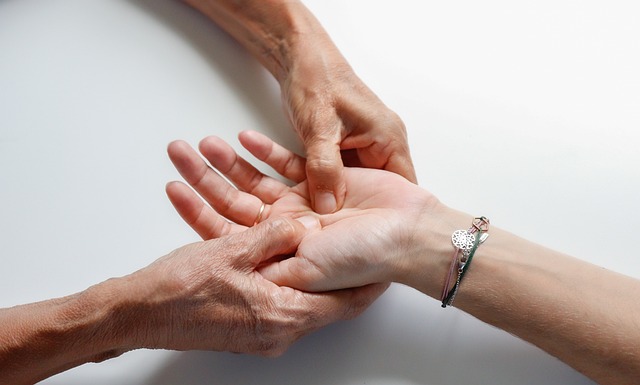Holistic wellness involves integrating physical and mental health through diverse therapies like cognitive-behavioral therapy (CBT), mindfulness therapy, somatic therapy, art therapy for healing, yoga therapy, and meditation. These approaches, collectively known as integrative wellness therapy, promote emotional balance, reduce stress, enhance resilience, and foster self-discovery. In a fast-paced world, this multifaceted approach is crucial for achieving overall well-being by addressing physical, emotional, and mental health interconnectedly.
“Uncover your path to optimal well-being with personalized plans that transform both mind and body. In an era where holistic health is increasingly recognized as a cornerstone of a fulfilling life, this comprehensive guide explores diverse therapeutic approaches. From cognitive-behavioral therapy and mindfulness practices to integrative wellness therapies like yoga and meditation, we delve into strategies for achieving emotional balance and cultivating lasting vitality through creative outlets such as art therapy and somatic practices.”
- Understanding Holistic Wellness: Uniting Body and Mind
- Therapeutic Approaches for Emotional Balance
- Integrative Practices for Physical and Mental Healing
- Cultivating Long-Lasting Well-Being through Creative Therapies
Understanding Holistic Wellness: Uniting Body and Mind

Holistic wellness is a multifaceted approach to well-being that considers both physical and mental health as interconnected aspects. It recognizes that true wellness arises when we nurture our bodies, minds, and emotional states in harmony. Traditional therapy for holistic wellness often incorporates various therapeutic modalities, such as cognitive-behavioral therapy (CBT), mindfulness therapy, and somatic therapy, to address these diverse components.
Integrative wellness therapy may include art therapy for healing, yoga therapy, and meditation for holistic wellness, allowing individuals to explore and balance their emotional, physical, and mental states. These practices foster a deeper connection with oneself, promote emotional healing, and enhance overall resilience. By integrating body and mind, individuals can achieve a profound sense of well-being that permeates all areas of life.
Therapeutic Approaches for Emotional Balance

Achieving emotional balance is a vital component of overall well-being, and there are numerous therapeutic approaches to help individuals find their equilibrium. One popular method is mindfulness therapy, which encourages individuals to focus on the present moment, cultivating awareness of thoughts and feelings without judgment. This practice has been shown to reduce stress and anxiety, promoting a deeper sense of calm and emotional stability.
Cognitive-behavioral therapy (CBT) is another effective tool for emotional healing. CBT helps individuals identify and challenge negative thought patterns and beliefs, replacing them with healthier alternatives. Integrative wellness therapy takes a holistic approach, combining various techniques such as art therapy, yoga therapy, and meditation to address physical, mental, and emotional aspects of well-being. Somatic therapy focuses on the connection between the mind and body, aiming to release traumatic memories stored in the body’s somatic tissues. Art therapy for healing provides an alternative means of expression, allowing individuals to explore and convey their emotions through creative mediums.
Integrative Practices for Physical and Mental Healing

In today’s fast-paced world, achieving overall well-being requires a multifaceted approach that integrates physical and mental health practices. Integrative wellness therapy combines various therapeutic techniques, such as cognitive-behavioral therapy (CBT), mindfulness therapy, and somatic therapy, to address holistic healing. These methods empower individuals to manage stress, process emotions, and cultivate self-awareness, fostering both emotional healing and improved physical well-being.
Art therapy for healing and yoga therapy are also valuable components of integrative wellness. Engaging in creative expression through art can provide a safe outlet for processing difficult emotions and experiences. Similarly, yoga combines physical postures, breathing techniques, and meditation to promote mental clarity, reduce anxiety, and enhance flexibility—both physically and mentally. Meditation for holistic wellness is another powerful tool that encourages mindfulness, helping individuals cultivate present-moment awareness and cultivate inner peace.
Cultivating Long-Lasting Well-Being through Creative Therapies

Cultivating long-lasting well-being involves exploring diverse therapeutic approaches that holistically nurture the mind, body, and spirit. Beyond traditional talk therapy, creative therapies like art therapy for healing, yoga therapy, and mindfulness therapy offer powerful tools for emotional healing. These holistic wellness practices not only provide stress relief but also enhance cognitive flexibility, promote positive self-regard, and foster a deeper connection with one’s inner being.
Integrative wellness therapy, which combines elements of cognitive-behavioral therapy (CBT), somatic therapy, and meditation for holistic wellness, is particularly effective in addressing the complex interplay between physical, emotional, and mental health. By tailoring these therapeutic modalities to individual needs, people can achieve lasting transformation, boosting their overall well-being and resilience in a vibrant and interconnected world.
Personalized plans for achieving overall well-being involve a multifaceted approach that integrates therapeutic modalities such as cognitive-behavioral therapy, mindfulness practices, yoga therapy, and art therapy for healing. By combining these integrative wellness therapies with emotional healing techniques like somatic therapy, individuals can cultivate long-lasting well-being by addressing both the mind and body. Embracing holistic wellness means navigating a symphony of self-care that promotes emotional balance and enhances overall vitality.
